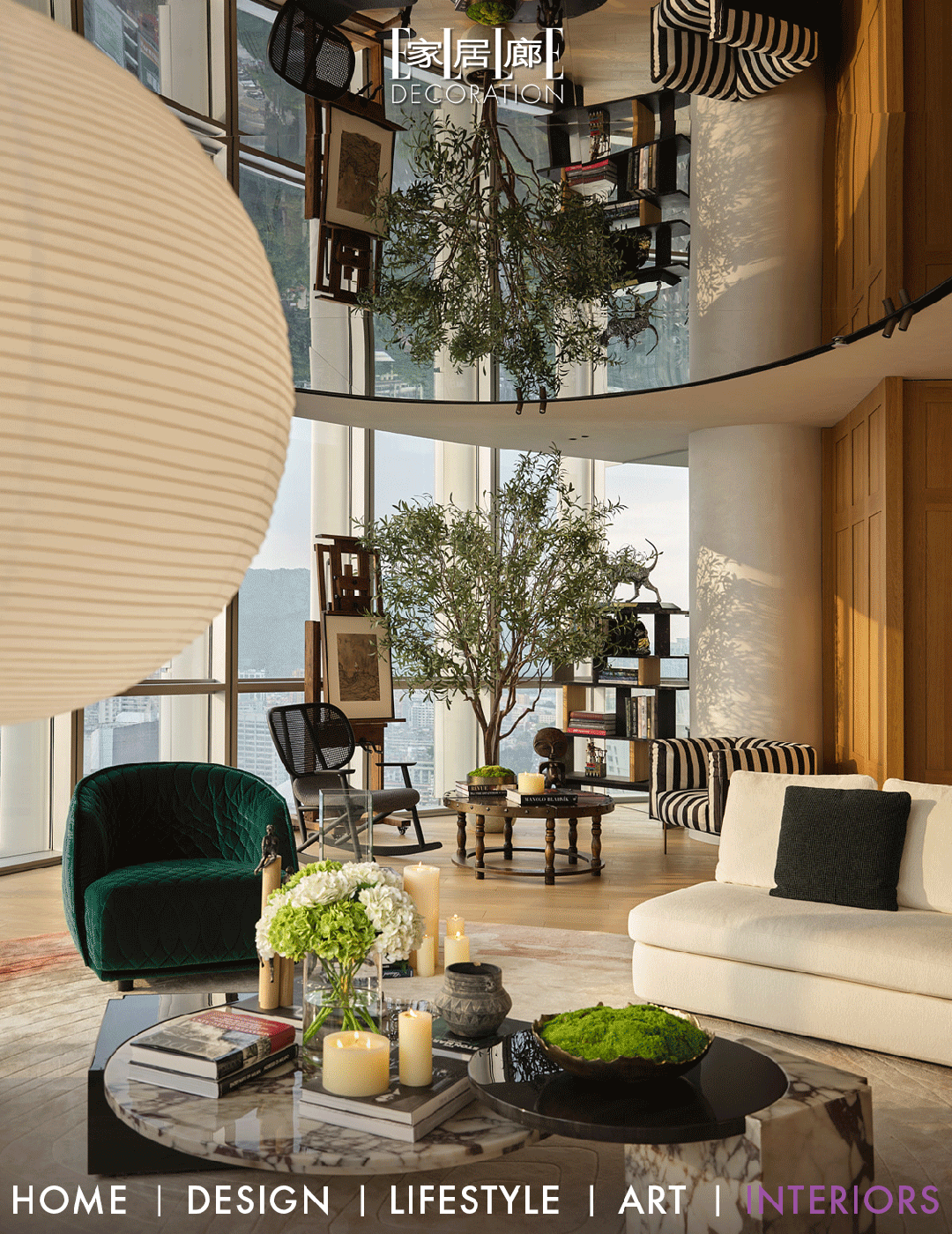Ecological Living Module / Gray Organschi Architecture
2018-12-15 21:43
Project: Ecological Living Module Architects: Gray Organschi Architecture Collaborators: UN Environment, Yale University, UN Habitat Location: New York, United States Area: 22-square-meter Year 2018 Photos: Courtesy of Center for Ecosystems in Architecture – Yale and UN Environment
项目:生态生活模块建筑师:Gray Organschi建筑合作者:联合国环境,耶鲁大学,联合国人居地点:纽约,美国地区:22平米2018年照片:建筑生态系统中心提供-耶鲁和联合国环境
Description by Gray Organschi Architecture: Today, one billion people live in informal settlements, often without reliable electricity, water, sanitation, or food. Meanwhile, the housing sector consumes 40% of the planet’s total resources and contributes more than a third of global greenhouse gas emissions. UN Environment and UN Habitat tasked the design team to address these issues with a housing prototype that would be installed at the UN Headquarters in New York. In response, we designed and built the Ecological Living Module – ELM, a 230 ft² home that is adaptable, efficient, and fully off-grid, while making use of sustainable materials, simple construction techniques, and next-generation green technology. With sleeping and living spaces for four people, a full kitchen, and a bathroom with shower and composting toilet, the Ecological Living Module – ELM can also readily transition from domestic to commercial uses. By building with renewable, biogenic materials and incorporating systems for on-site energy, water, air and waste management, we sought to limit the energy and resources required to produce and operate the ELM over its entire life cycle.
GrayOrganschi建筑描述:今天,10亿人生活在非正规住区,通常没有可靠的电力、水、卫生设施或食物。与此同时,住房部门消耗了地球总资源的40%,占全球温室气体排放量的三分之一以上。联合国环境规划署和联合国人居署委托设计小组处理这些问题,并将在纽约联合国总部安装一个住房原型。作为回应,我们设计并建造了生态生活模块-榆树,这是一座230平方英尺的住宅,适应性强,效率高,完全脱离电网,同时利用可持续的材料、简单的建筑技术和下一代绿色技术。生态生活模块-榆树有四个人的睡眠和生活空间,一个完整的厨房,一个带淋浴和堆肥厕所的浴室,也可以很容易地从家庭过渡到商业用途。通过使用可再生的、生物的材料,并结合现场能源、水、空气和废物管理系统,我们力求限制榆树在整个生命周期内生产和运营所需的能源和资源。
The building’s form and orientation are optimized to reduce unwanted solar heat gain, promote passive stack effect ventilation, provide ample natural light, and maximize sun exposure for its PV and Integrated Concentrating Solar Façade (HeliOptix) systems. The HeliOptix system produces greater power output per area than traditional solar while using less than 1% of the semiconductor material and transmitting diffuse daylight into the interior. These solar systems provide 100% of the building’s energy needs. All water needs are met through on-site systems, with 80% of rainwater from the roof captured, stored, and filtered for potable water. During the humid summer months, a de-humidifier system supplements the rainwater supply with moisture captured from the air. Meanwhile, greywater is recycled to irrigate food crops integrated into the micro-farming wall on the west façade. A building-integrated Active Modular Phytoremediation System (FABS)—an aero-hydroponic green wall planted in a probiotic growing substrate—utilizes plants’ root systems to filter airborne VOCs, particulates, and pathogens, increase indoor microbiome diversity, and reduce fresh air intake requirements.
建筑物的形状和方向经过优化,以减少不需要的太阳能热增益,促进无源堆叠效应通风,提供充足的自然光,并为其PV和集成集中太阳能设施(HeliOptix)系统提供最大程度的阳光照射。与传统太阳能相比,HeliOptix系统在使用不到1%的半导体材料并将漫射日光传输到内部的同时,每个区域产生更大的功率输出。这些太阳系提供了建筑物100%的能源需求。通过现场系统满足所有水需求,80%的雨水从屋顶收集、储存和过滤饮用水。在潮湿的夏季,除湿系统补充雨水供应,并从空气中捕获水分。同时,灰水被回收利用,以灌溉被整合到西部的微农业墙的粮食作物。一套集成的主动模块化植物修复系统(FABS)–-种植在益生菌生长底物中的航空水压绿墙–利用植物根系过滤空气中的VOCs、微粒和病原体,增加室内微生物的多样性,减少新鲜空气摄入量要求。
The Ecological Living Module is prefabricated at an off-site production facility and transported via truck to the building site, arriving as a compact 8’ x 8’ x 22’ container. Once the ELM is set onto its lightweight foundations, the roof assembly pivots on a steel hinge to create a 16 ft double-height interior space with a built-in sleeping loft. Prefabricated wall panels are then set in place by hand. For this iteration, the ELM was prefabricated in just four weeks and installed in three days by our team of 16 people. If put into large-scale industrial production, the ELM could be prefabricated at under $50,000 per unit.
生态生活模块是预制在一个场外生产设施,并通过卡车运输到建筑工地,作为一个紧凑的8‘x8’x22‘集装箱到达。一旦榆树被设置在其轻量级的基础上,屋顶组装轴在一个钢铰链上创建一个16英尺双高的内部空间与一个内置的睡眠阁楼。然后用手将预制墙板安装到位。在这个迭代中,ELM是在4周内预制出来的,由我们的16个人组成的团队在三天内安装。如果投入大规模的工业生产,榆树可以每台5万美元的价格预制。
The ELM’s reduced carbon footprint and off-grid systems address a number of issues critical to global sustainable development goals: reduced energy needs limit the financial resources necessary to produce housing; renewable bio-based materials preserve rural landscapes and finite resources; and if aggregated at a global scale, low-carbon residential development has the potential to dramatically reduce the effects of climate change.
榆树减少的碳足迹和离网系统解决了许多对全球可持续发展目标至关重要的问题:能源需求减少限制了生产住房所需的财政资源;基于可再生生物的材料保护农村景观和有限的资源;如果在全球范围内综合起来,低碳住宅开发有可能大大减少气候变化的影响。
About UN Environment: UN Environment is the leading global voice on the environment. It provides leadership and encourages partnership in caring for the environment by inspiring, informing, and enabling nations and peoples to improve their quality of life without compromising that of future generations. UN Environment works with governments, the private sector, civil society and with other UN entities and international organizations across the world.
关于联合国环境:联合国环境是全球在环境问题上的主要声音。它通过激励、宣传和使各国和人民能够在不损害子孙后代生活质量的情况下改善其生活质量,从而提供领导和鼓励伙伴关系来关心环境。联合国环境规划署与各国政府、私营部门、民间社会以及世界各地其他联合国实体和国际组织合作。
About Yale Center for Ecosystems in Architecture: The Center for Ecosystems in Architecture (CEA), founded by Anna Dyson, is a multidisciplinary research venture led by the Yale Schools of Architecture, Forestry - Environmental Studies, to develop transformative systems for the Built Environment. Alongside our partners in the Architecture, Engineering, and Construction (AEC) Industry, CEA seeks to address the complexity of transitioning global construction patterns by bringing together deep expertise of current practices with radically new socio-economic and technical approaches. We prioritize the requirements of living ecosystems towards buildings and cities that support biodiversity with an integrated approach to clean energy, water, air and material life cycles
耶鲁建筑生态系统中心:建筑生态系统中心(CEA),由安娜·戴森(Anna Dyson)创立,是耶鲁建筑、林业学院领导的一项多学科研究项目。
About UN-Habitat UN-Habitat is the United Nations programme working towards a better urban future. Its mission is to promote socially and environmentally sustainable human settlements development and the achievement of adequate shelter for all.
联合国人居署是联合国的一个项目,致力于建设一个更美好的城市未来。其任务是促进社会和环境上可持续的人类住区发展和实现人人有适当住房。
 举报
举报
别默默的看了,快登录帮我评论一下吧!:)
注册
登录
更多评论
相关文章
-

描边风设计中,最容易犯的8种问题分析
2018年走过了四分之一,LOGO设计趋势也清晰了LOGO设计
-

描边风设计中,最容易犯的8种问题分析
2018年走过了四分之一,LOGO设计趋势也清晰了LOGO设计
-

描边风设计中,最容易犯的8种问题分析
2018年走过了四分之一,LOGO设计趋势也清晰了LOGO设计






















































